The blog is mainly a general knowledge page for all age groups who are interested in improving their knowledge. I have tried to make the explanations as simple as I can. I have made use of tht for gathering the facts.
Popular Posts
-
HIPPOCRATES Father of Medicine in the Western World. As we saw from the postings on Sushruta and Charakan, medicne and surgery was quite ...
-
DEAR ALL, SWAMI VIVEKANANDA JAYANTHI, JANUARY 12 2011 Swami Vivekananda was born in Calcutta (Now Kolkata) Monday in a traditional family...
-
Sangam Age in Tamil Kingdoms The history of the Tamil country becomes clear only from the Sangam period. The word Sangam means an assoc...
-
Ernest Rutherford Discovers the Structure of an Atom. 1911 Ernest Rutherford in academic garb. Courtesy Edgar Fahs Smith Mem...
-
The Rani of Jhansi Regiment was the Women's Regiment of the Indian National Army, the armed force formed by Indian nationalists in 1942 ...
-
Arikamedu Pondicherry This is a historic site which has revealed ancient Roman artifacts that are evidence of the thriving trade that exist...
-
Serendip...WHAT? T he Kingdom of Serendip Once upon a time there was an oriental and exotic Kingdom called Serendip, the memory of whic...
-
History of Medicine The historic contribution of Sushruta ,(600-500BC) circa the ancient surgeon of India, is well recognised for his i...
-
Brihdeshwar Temple has been declared as world heritage site in 1987 AD. The temple is located in the rice bowl district of Tamil Nadu, Than...
-
FATHERS OF SURGERY AND MEDICINE 4200 BC -- CAPT AJIT VADAKAYIL FATHER OF SURGERY -- ACHARYA SUSHRUTA FATHER OF MEDICINE -- ACHARYA CHA...
Popular Posts
-
HIPPOCRATES Father of Medicine in the Western World. As we saw from the postings on Sushruta and Charakan, medicne and surgery was quite ...
-
DEAR ALL, SWAMI VIVEKANANDA JAYANTHI, JANUARY 12 2011 Swami Vivekananda was born in Calcutta (Now Kolkata) Monday in a traditional family...
-
Sangam Age in Tamil Kingdoms The history of the Tamil country becomes clear only from the Sangam period. The word Sangam means an assoc...
-
Ernest Rutherford Discovers the Structure of an Atom. 1911 Ernest Rutherford in academic garb. Courtesy Edgar Fahs Smith Mem...
-
The Rani of Jhansi Regiment was the Women's Regiment of the Indian National Army, the armed force formed by Indian nationalists in 1942 ...
-
Arikamedu Pondicherry This is a historic site which has revealed ancient Roman artifacts that are evidence of the thriving trade that exist...
-
Serendip...WHAT? T he Kingdom of Serendip Once upon a time there was an oriental and exotic Kingdom called Serendip, the memory of whic...
-
History of Medicine The historic contribution of Sushruta ,(600-500BC) circa the ancient surgeon of India, is well recognised for his i...
-
Brihdeshwar Temple has been declared as world heritage site in 1987 AD. The temple is located in the rice bowl district of Tamil Nadu, Than...
-
FATHERS OF SURGERY AND MEDICINE 4200 BC -- CAPT AJIT VADAKAYIL FATHER OF SURGERY -- ACHARYA SUSHRUTA FATHER OF MEDICINE -- ACHARYA CHA...
Pages
Total Pageviews
Friday, September 30, 2011
GREAT INVENTIONS THAT NEVER BECAME POPULAR!!
Mr. Edison’s Kindle
Fifteen amazing gadget ideas that were way, way ahead of their time.By Harry McCracken | Sunday, January 24, 2010 at 11:04 pm

“The best way to predict the future is to invent it.” So said legendary tech visionary Alan Kay. He was absolutely correct. But he might have added that inventing the future is anything but a cakewalk. Even though everyone who does it has the luxury of learning from predecessors who tried and failed.
The brightest inventors on the planet keep coming up with ideas that never amount to much–even when they set out to solve real problems, and even when their brainchildren foreshadow later breakthroughs. And professional tech watchers have long proven themselves prone to getting irrationally exuberant about stuff that just isn’t ready for prime time.
Thanks to Google Books’ archives of Popular Science, Popular Mechanics, LIFE, and other magazines that frequently reported on futuristic gizmos, we have a readily accessible record of technology that failed to live up to the initial hype–including random notions that never got off the drawing board, startlingly advanced products that didn’t find a market, and very rough drafts of concepts that eventually became a big deal. The best of them are fascinating, even when it’s not the least bit surprising that they flopped.
Herewith, fifteen inventions–not that all of them ever got built–that were at least a decade ahead of their time. They’re in chronological order, starting with the inspiration that gave this article its title.
1. Thomas Edison’s Metal Books
1. Thomas Edison’s Metal Books
 As described in: Cosmopolitan, February 1911.
As described in: Cosmopolitan, February 1911.What it was: Among the numerous brainstorms and predictions that Thomas Alva Edison shared with Cosmopolitan readers in an exclusive interview was his vision of 40,000-page books that would be two inches thick and weigh a pound–because their pages would be made of metal, not paper:
Even the pages of books may be made of steel, though Edison regards nickel as a better substitute for paper…”Why not?” asks Edison. “Nickel will absorb printer’s ink. A sheet of nickel one twenty-thousandth of an inch thick is cheaper, tougher, and more flexible than an ordinary sheet of book-paper. A nickel book, two inches thick, would contain 40,000 pages. Such a book would weigh only a pound. I can make a pound of nickel sheets for a dollar and a quarter.”Here…is a prospect of real culture for the masses Forty thousand pages in a volume! A single volume the equivalent in printing space of two hundred paper-leaved books of two hundred pages each! What a library might be placed between two steel covers and sold for, perhaps, two dollars!
That’s a lot of exclamation points!
Flies in the ointment: I feel disrespectful expressing skepticism about an idea pitched by the greatest inventor of all time, but…I’m skeptical that it would have worked. Also, wouldn’t it have been tough to flip ahead to, say, page 17,356?
When did the basic idea become practical? I know of no evidence that Edison or anyone else ever printed a single book on nickel. (A Google search for “books printed on nickel” returns one result–a Publisher’s Weekly story referencing the Edison interview.) The first time anyone crammed massive numbers of books into one booklike device that real people could buy may have been when the Rocketbook and Softbook were released in 1999–not that very many people bought either of them.
Modern counterpart: The Kindle, the Nook, Sony’s Readers, and every other current gadget for reading digital tomes…even though they all cost a lot more than $2. And is it going too far to say that Edison had a 1911 version of the upcoming Apple tablet in mind?
2. The Automobile Wireless Telephone
 As seen in: Popular Mechanics, February 1913.
As seen in: Popular Mechanics, February 1913.What it was: An brainchild of Los Angeles inventor E.C. Hanson, who successfully made wireless calls over a distance of 35 miles from a phone installed in his roundabout.
Flies in the ointment: You thought the telescoping antennae on early brick phonesare comically archaic? Hanson’s car phone required that the car in question be outfitted with telephone poles fore and aft, supporting “aerial wires and high-voltage insulators.”
When did the basic idea become practical? Experimentation with mobile phones continued for decades, but they only started to make sense in 1983 when Motorola shipped its DynaTAC, the first true cell phone–a full seven decades after Hanson’s experiments.
Modern counterpart: Your iPhone, BlackBerry, Nexus One, or Pre. Or even your humble flip phone.
3. The Telenewspaper and Electric Writer
As seen in: Popular Mechanics, June 1928.
 What they were: Items in a “home of the future” depicting the typical house of 2000, designed by architect R.A. Duncan and exhibited in London. Besides the expected flying car in the garage, the place had a high-tech study with:
What they were: Items in a “home of the future” depicting the typical house of 2000, designed by architect R.A. Duncan and exhibited in London. Besides the expected flying car in the garage, the place had a high-tech study with:…a built-in radio and loud speakers, a built-in television set to see the day’s events and a built-in telenewspaper for visible radio projection of the day’s news. An electric writer, to transmit by radio similar messages, and an elaborate lighting-control panel, were also included.
That’s as far as the magazine’s explanation goes. If the room already has a TV, I’m assuming that the telenewspaper would have presented news in words and pictures displayed on a screen. The electric writer, meanwhile, appears to involve an in-wall display and some sort of box with buttons. I can’t see any evidence of QWERTY capability–maybe there was a wireless keyboard.
Flies in the ointment: The illustration in the magazine shows a house dwarfed by a huge honkin’ antenna, looking a bit like the ones at the top of San Francisco’s Twin Peaks. With experimental television broadcasts barely underway, it was awfully premature to be talking about homes with multiple displays built into the walls. Also, shouldn’t the telenewspaper and the electric writer be one device, or at least share one display?
When did the basic ideas become practical? In the 1980s and 1990s, more and more people began using electric screens to read news and transmit messages, although the screens usually weren’t built into walls and the transmissions used telephone wires rather than radio waves.
Modern counterparts: Google News and Gmail.
Thursday, September 29, 2011
Thursday, Sept.29. 2011
Kenyan environmentalist (pictured), the first African woman to receive the Nobel Peace Prize, dies at the age of 71.
Patrick Makau Musyoki of Kenya wins the Berlin Marathon, setting a new world record.
King Abdullah of Saudi Arabia announces that Saudi women will be permitted to vote and stand for election.
Vladimir Putin declares his candidacy for the presidency of Russia, as proposed by incumbent .
On this day...
September 28: Rosh Hashanah (Jewish New Year) begins at sunset .
(2011, 5772 AM); Statehood Day in the Czech Republic; Teachers' Day in Taiwan
The Jewish holidays are days observed by Jews as a holy or secular commemoration of important events in Jewish history. In Hebrew, Jewish holidays and festivals, depending on their nature, may be called yom tov ("good day") (Yiddish: yontif) or Ḥagh/Chag ("festival") or ta'anit("fast"). A "Yom Tov" has similar obligations and restrictions to Shabbat, with the exception that you can cook, carry, and transfer fire (from a pre-existing flame). The origins of various Jewish holidays generally can be found in Biblical mitzvot (commandments), rabbinical mandate, and modern Israeli history.
1901 – Philippine-American War: Filipino guerrillas killed more than forty American soldiers in a surprise attack in the town of Balangiga on Samar Island.
1928 – Scottish biologist and pharmacologist Alexander Fleming (pictured) discovered penicillin when he noticed a bacteria-killing mould growing in his laboratory.
2008 – SpaceX's Falcon 1 rocket achieved orbit on its fourth attempt to become the first successful liquid-propelled orbital launch vehicle developed with private funding.
2009 – A protest held by 50,000 people in Conakry, Guinea, was forcefully disrupted by the military junta, resulting in at least 157 deaths and over 1,200 injuries.
Patrick Makau Musyoki of Kenya wins the Berlin Marathon, setting a new world record.
King Abdullah of Saudi Arabia announces that Saudi women will be permitted to vote and stand for election.
Vladimir Putin declares his candidacy for the presidency of Russia, as proposed by incumbent .
Wednesday, September 28, 2011
SOME MYTHS, JOKES AND FACTS
1. Water is composed of two gins, Oxygin and Hydrogin. Oxygin is pure gin. Hydrogin is gin and water.
2. Blood flows down one leg and up the other.
3. Momentum: What you give a person when they are going away.
4. To prevent milk from turning sour, keep it in the cow.
5. The parts of speech are lungs and air.
6. The inhabitants of Moscow are called Mosquitoes.
SOME MYTHS, FACTS AND FACTS
. Water is composed of two gins, Oxygin and Hydrogin. Oxygin is pure gin. Hydrogin is gin and water.
Water is a chemical substance with the chemical formula H2O. Its molecule contains one oxygen and two hydrogen atoms connected bycovalent bonds. Water is a liquid at ambient conditions, but it often co-exists on Earth with its solid state, ice, and gaseous state (water vaporor steam). Water also exists in a liquid crystal state near hydrophilic surfaces.
Water covers 70.9% of the Earth's surface, and is vital for all known forms of life.A very small amount of the Earth's water is contained within biological bodies and manufactured products.
Water on Earth moves continually through a cycle of evaporation or transpiration (evapotranspiration), precipitation, and runoff, usually reaching the sea. Evaporation and transpiration contribute to the precipitation over land.
Clean drinking water is essential to humans and other lifeforms. Access to safe drinking water has improved steadily and substantially over the last decades in almost every part of the world. There is a clear correlation between access to safe water and GDP per capita.is actively handled by humans, is consumed byagriculture.

The truth behind the curtain- Of water , water purifiers and chlorine
The mercury levels have risen much beyond my expectations. The afternoon was hot, sultry, uncomfortable and unbearable. The birds too were reluctant to fly out in the air and were resting quietly in their nests. The natural pool that would otherwise witness vibrant activity of fishes performing stunts was now calm and quiet. Children who would normally have to be forced to stay indoors were now finding relief with the AC put to work and the computer receiving signals from the gaming hands. I at last found something that could cool me down- the community swimming pool.
I without any hesitation dived into the pool. My happiness was no less than the joy of a rishi when the god is pleased by his penance.
I called the doctor. He tested me and declared that something must have gone wrong with what I have eaten or drunk. He prescribed some medicines on a plain sheet of plain in a writing that none except the boy at the medical shop could understand.
I connected to the World Wide Web and started my research. Amazing facts did present themselves before me. The water purifier was unsafe and so was the water in the swimming pool. It seemed as though I drank a bucket of water to which a very strong disinfectant was added to kill the germs and the label purified water was put on the bucket. The chemicals added cause much more ailments than the germs themselves. And here is a brief summary of the interesting facts that I found out.
 Not all chemicals can be used to purify water. Many of them are harmful and fatal. For the first time in 1991 the Standard setting body in India, Bureau of Indian Standards (BIS) made available the water standards IS 10500-1991. However India does not have any existing Standards for Storage Water Purifiers or other water purifiers. In such circumstances one should rely on the regulatory authorities like the United States Environment Protection Agency (EPA) and others. These regulating authorities certify whether a particular chemical is suitable for use in Drinking Water use or not. Using chemicals that are not suggested for purification of water amounts to crime. While many certifications are necessary for the electronic goods and other household appliances, nothing as such exist for water purifiers, including the BIS certificate. There is no way by which consumers can know how safe a water purifier is.
Not all chemicals can be used to purify water. Many of them are harmful and fatal. For the first time in 1991 the Standard setting body in India, Bureau of Indian Standards (BIS) made available the water standards IS 10500-1991. However India does not have any existing Standards for Storage Water Purifiers or other water purifiers. In such circumstances one should rely on the regulatory authorities like the United States Environment Protection Agency (EPA) and others. These regulating authorities certify whether a particular chemical is suitable for use in Drinking Water use or not. Using chemicals that are not suggested for purification of water amounts to crime. While many certifications are necessary for the electronic goods and other household appliances, nothing as such exist for water purifiers, including the BIS certificate. There is no way by which consumers can know how safe a water purifier is.
Chlorine is one such chemical that should be used with care. A dosage of 10-20ppm is dangerous and possesses many risks. High chlorine levels show both short term and long term effects. Chest pain, vomiting, coughing, difficulty breathing,, nose, eyes, throat, stomach irritation and nausea are some observable effects. The fact that chlorine is a carcinogenic is debated. However, the EPA does not classify chlorine as a carcinogenic.
Removing all the clutter from my brain was too difficult for me. However I managed to sleep and my mind enter the sub conscious state from the conscious state.
I was just about to call a dealer to buy a new house when there was another knock at my door. Oh no! Where am I to keep the money that would come now? I might have to myself move out of the house if I am to accept that money.
I moved towards the door and opened it. Much to my surprise; hospital beds, wheel chairs, cardiograms, a team of doctors, nurses, ward boys and everyone and everything else rushed in. ‘We have been informed that you are going to be attacked by a number of diseases and we are here to rescue you’ said the head doctor.
 How is it in the world that they know in advance about my health condition? May be god sends warnings when millionaires are in a critical stage. The doctors started their work. I looked like a robot fitted with external hard drives, processors and all other equipments to make it more efficient.
How is it in the world that they know in advance about my health condition? May be god sends warnings when millionaires are in a critical stage. The doctors started their work. I looked like a robot fitted with external hard drives, processors and all other equipments to make it more efficient.
The money that had earlier filled my house diminishing and later on my valuables and even my house too vanished. I was left in rags with a huge plate in hand- may be the one that I should use for begging.
No………… and I was awakened by my own shriek. Thank god! It was a dream. The first thing that I have done was to dump the water purifier in the garbage which was followed by an oath that I shall never again see the face of a swimming pool. And today I live happily even after the intake of lakhs of germs present in the not so highly purified water!
I enjoyed myself in the pool for a few minutes after which I could feel a sensation of itching that I could no more bear. In seconds, I came out of the pool but the itching persisted. I thought that there was something wrong with the water. Moreover my skin is highly allergitic to chemicals. May be, the chemicals were used in much excess than what was required. I felt the hot blazing sun to be much better.
I got into my car to reach home. My throat had dried completely. As soon as I reached home, I dashed towards the newly bought water purifier and quenched my thirst. The purified water was crystal clear and the water tasted good too.
My attention was drawn towards the bright shining sticker on the purifier that promised a handsome reward of Rs 3.1919187 crores if one could prove that the water purifier was unsafe. I wondered what was the need to place a decimal and append the six letter word ‘crores’ at the end. Was it because one would not have the time to count the number of digits to find out if the promised money was nearly three crores or three lakhs? There was no use in thinking over that for I am not that lucky to claim the money.
I switched on the air conditioner and lay down on the bed. I pulled the blanket over me and was thinking of what I would be dreaming of if I went into a deep sleep at that moment. Suddenly I was woken up with a terrible pain in my stomach. I felt as if my internal organs had declared a war against me and have decided to end me.
I am a kind of person who would like to investigate all unnecessary things. Why did the stomach ache attack me all of a sudden? What did I eat or drink since morning? Bread and jam- but that is what I consume daily. What was new? Yes, the water from the brand new purifier. But could it be the reason? If so, why would they offer a reward of more than three crores for everyone who would visit them with a stomach ache or similar ailments?
I even remember gobbling a glass of water accidentally from the pool. That was my first visit to a pool and such accidents are normal.
I connected to the World Wide Web and started my research. Amazing facts did present themselves before me. The water purifier was unsafe and so was the water in the swimming pool. It seemed as though I drank a bucket of water to which a very strong disinfectant was added to kill the germs and the label purified water was put on the bucket. The chemicals added cause much more ailments than the germs themselves. And here is a brief summary of the interesting facts that I found out.
 Not all chemicals can be used to purify water. Many of them are harmful and fatal. For the first time in 1991 the Standard setting body in India, Bureau of Indian Standards (BIS) made available the water standards IS 10500-1991. However India does not have any existing Standards for Storage Water Purifiers or other water purifiers. In such circumstances one should rely on the regulatory authorities like the United States Environment Protection Agency (EPA) and others. These regulating authorities certify whether a particular chemical is suitable for use in Drinking Water use or not. Using chemicals that are not suggested for purification of water amounts to crime. While many certifications are necessary for the electronic goods and other household appliances, nothing as such exist for water purifiers, including the BIS certificate. There is no way by which consumers can know how safe a water purifier is.
Not all chemicals can be used to purify water. Many of them are harmful and fatal. For the first time in 1991 the Standard setting body in India, Bureau of Indian Standards (BIS) made available the water standards IS 10500-1991. However India does not have any existing Standards for Storage Water Purifiers or other water purifiers. In such circumstances one should rely on the regulatory authorities like the United States Environment Protection Agency (EPA) and others. These regulating authorities certify whether a particular chemical is suitable for use in Drinking Water use or not. Using chemicals that are not suggested for purification of water amounts to crime. While many certifications are necessary for the electronic goods and other household appliances, nothing as such exist for water purifiers, including the BIS certificate. There is no way by which consumers can know how safe a water purifier is.Chlorine is one such chemical that should be used with care. A dosage of 10-20ppm is dangerous and possesses many risks. High chlorine levels show both short term and long term effects. Chest pain, vomiting, coughing, difficulty breathing,, nose, eyes, throat, stomach irritation and nausea are some observable effects. The fact that chlorine is a carcinogenic is debated. However, the EPA does not classify chlorine as a carcinogenic.
Removing all the clutter from my brain was too difficult for me. However I managed to sleep and my mind enter the sub conscious state from the conscious state.
There was a knock at my door and I was presented with a cash reward of 3.1919187 crores promised by that reputable company that claims to purify every single drop of water and make it safe for drinking. Such a huge amount! What shall I do with it? No idea.
Even before I could digest that happiness, there were few more knocks at the door and money came pouring in- 1 crore, 1.97 crores, 98.75 lakhs, 5 crores and so on…… at the end my house was filled with money and there was no place for me to move. I thought that the first thing to be done is to buy a new house.
I was just about to call a dealer to buy a new house when there was another knock at my door. Oh no! Where am I to keep the money that would come now? I might have to myself move out of the house if I am to accept that money.
I moved towards the door and opened it. Much to my surprise; hospital beds, wheel chairs, cardiograms, a team of doctors, nurses, ward boys and everyone and everything else rushed in. ‘We have been informed that you are going to be attacked by a number of diseases and we are here to rescue you’ said the head doctor.
 How is it in the world that they know in advance about my health condition? May be god sends warnings when millionaires are in a critical stage. The doctors started their work. I looked like a robot fitted with external hard drives, processors and all other equipments to make it more efficient.
How is it in the world that they know in advance about my health condition? May be god sends warnings when millionaires are in a critical stage. The doctors started their work. I looked like a robot fitted with external hard drives, processors and all other equipments to make it more efficient.The money that had earlier filled my house diminishing and later on my valuables and even my house too vanished. I was left in rags with a huge plate in hand- may be the one that I should use for begging.
No………… and I was awakened by my own shriek. Thank god! It was a dream. The first thing that I have done was to dump the water purifier in the garbage which was followed by an oath that I shall never again see the face of a swimming pool. And today I live happily even after the intake of lakhs of germs present in the not so highly purified water!
Monday, September 26, 2011
WHO ARE ELIGIBLE FOR THE NOBEL PRIZE..EXAMPLES
Nobel Prizes are normally given for discoveries rather than inventions. A discovery has been described as an abstract theory, which may further lead to an invention. Inventions are a process, more concrete and have a utilitarian purpose. This list looks at some of the fantastic discoveries that have been made by scientists and thinkers over several decades of hard work.
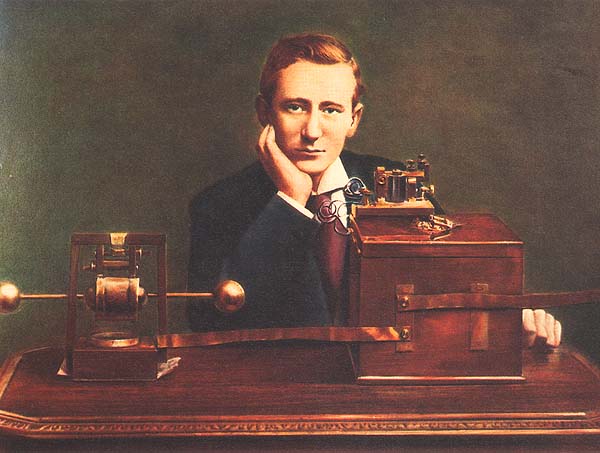 Albert Einstein – He won the Physics Nobel Prize in 1921 for his “discovery of the law of photoelectrical effect”. The actual discovery may not have touched our lives but without it many of the modern day electronics would not have come into existence.
Albert Einstein – He won the Physics Nobel Prize in 1921 for his “discovery of the law of photoelectrical effect”. The actual discovery may not have touched our lives but without it many of the modern day electronics would not have come into existence.
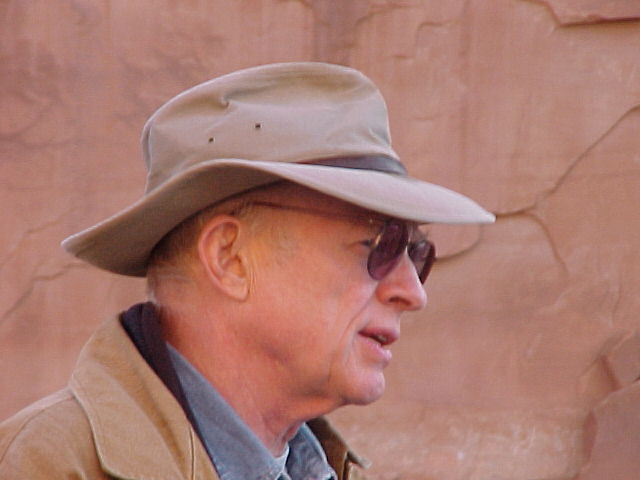 3. Luis Walter Alvarez – He won the Nobel Prize in Physics in 1968, and had over 50 patents in his name. His most famous and useful invention was the radio distance and direction indicator. His invention of the hydrogen bubble chamber was used to detect subatomic particles and this further led to a major change in nuclear theories.
3. Luis Walter Alvarez – He won the Nobel Prize in Physics in 1968, and had over 50 patents in his name. His most famous and useful invention was the radio distance and direction indicator. His invention of the hydrogen bubble chamber was used to detect subatomic particles and this further led to a major change in nuclear theories.
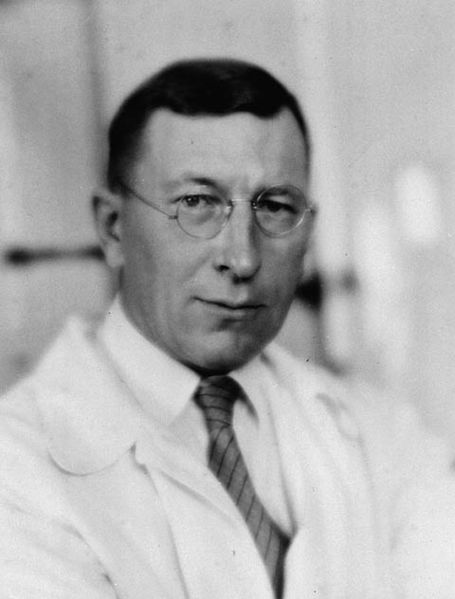 4. Frederick Banting - A 1923 Nobel Prize winner in medicine, he discovered insulin and the role that it played in treating diabetes. With his colleagues, he then invented means of extracting and isolating insulin, and administering it to diabetes patients.
4. Frederick Banting - A 1923 Nobel Prize winner in medicine, he discovered insulin and the role that it played in treating diabetes. With his colleagues, he then invented means of extracting and isolating insulin, and administering it to diabetes patients.
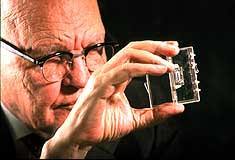 5. Jack S. Kilby - A scientist who won the Physics Nobel Prize in 2000, Kilby is best known as the inventor of the handheld calculator and the thermal printer. His monolithic integrated circuit is one of the most widely used applications in electronic circuitry.
5. Jack S. Kilby - A scientist who won the Physics Nobel Prize in 2000, Kilby is best known as the inventor of the handheld calculator and the thermal printer. His monolithic integrated circuit is one of the most widely used applications in electronic circuitry.
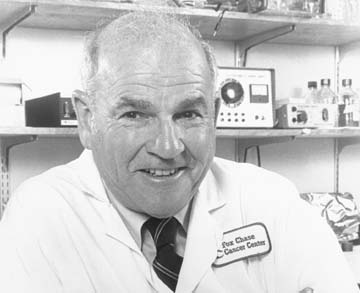 6. Baruch S Blumberg – In 1963 Blumberg discovered an antigen to detect the presence of Hepatitis B in blood samples. His invention of the test to isolate this virus, is used extensively even today, and it has led to a significant decrease in Hepatitis B infections after blood transfusions. He also jointly developed a vaccine against this virus.
6. Baruch S Blumberg – In 1963 Blumberg discovered an antigen to detect the presence of Hepatitis B in blood samples. His invention of the test to isolate this virus, is used extensively even today, and it has led to a significant decrease in Hepatitis B infections after blood transfusions. He also jointly developed a vaccine against this virus.
 7. Arthur Schawlow – Along with Charles Townes he was the co-inventor of the Laser. Today various fields such as defence and communication and medicine rely upon Laser techniques to make their jobs easier. They received a patent for the laser in 1960 and within a few years it was being commonly used by eye-surgeons for minute, precise surgery.
7. Arthur Schawlow – Along with Charles Townes he was the co-inventor of the Laser. Today various fields such as defence and communication and medicine rely upon Laser techniques to make their jobs easier. They received a patent for the laser in 1960 and within a few years it was being commonly used by eye-surgeons for minute, precise surgery.
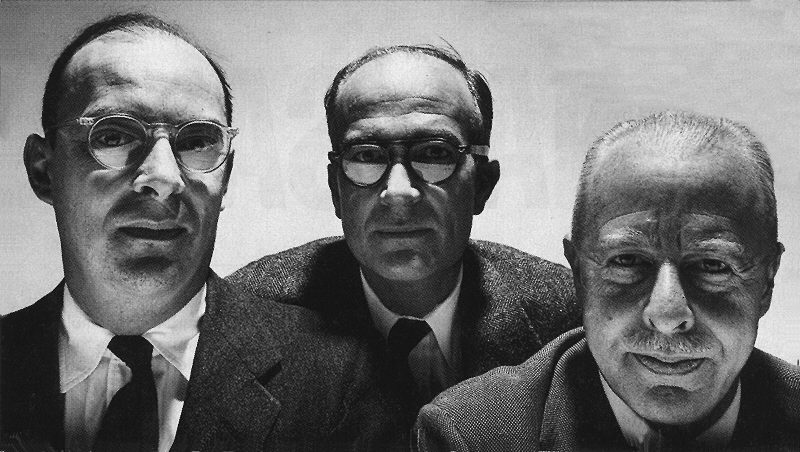 8. John Bardeen & William B Shockley & Walter Brattain – These three shared the Nobel Prize in Physics in 1956 for inventing the transistor – a device that could amplify electrical current. Bardeen won the Nobel Prize a second time 1972 for his work on superconductivity. Modern computer technology electronics and microchip owe a lot to these three scientists.
8. John Bardeen & William B Shockley & Walter Brattain – These three shared the Nobel Prize in Physics in 1956 for inventing the transistor – a device that could amplify electrical current. Bardeen won the Nobel Prize a second time 1972 for his work on superconductivity. Modern computer technology electronics and microchip owe a lot to these three scientists.
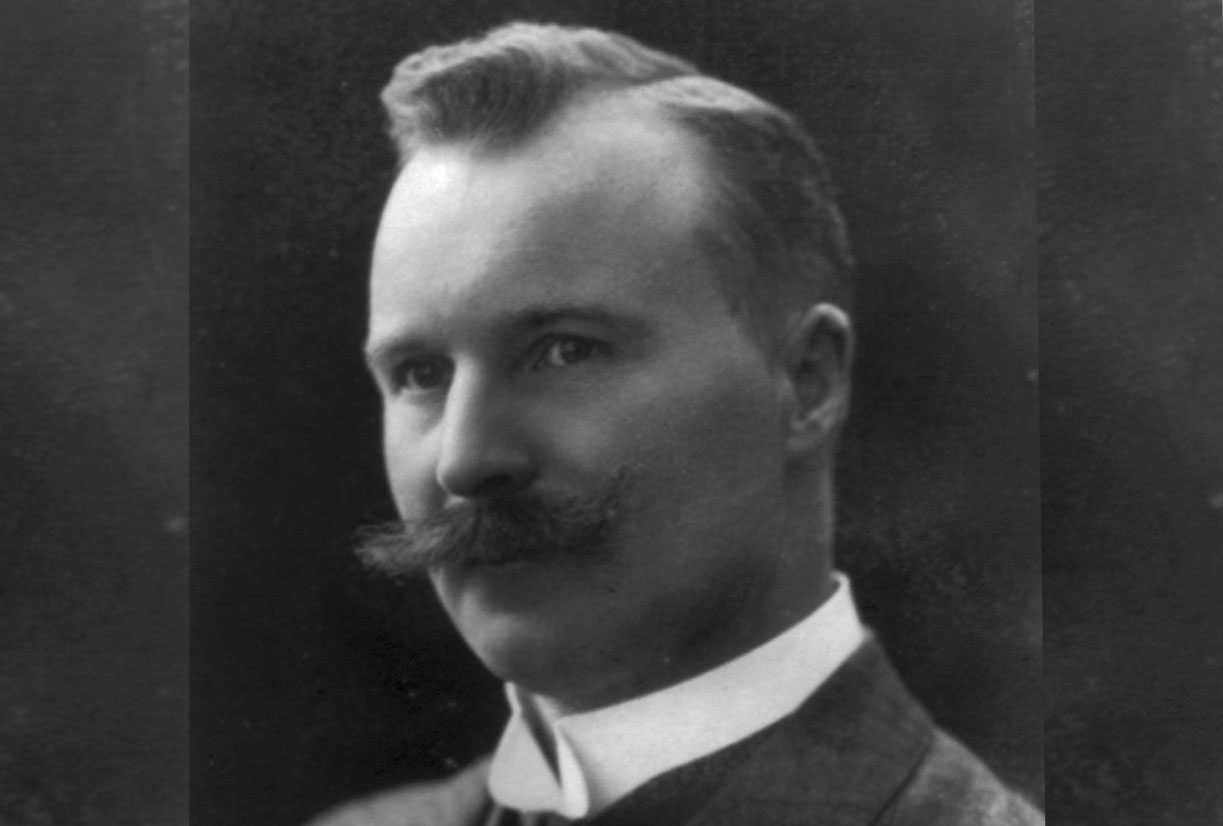 9. Nils Gustaf Dalen – He was awarded the Nobel Prize for his “invention of automatic regulators for use in conjunction with gas accumulators for illuminating lighthouses and bouys.” He was also the inventor of the AGA cooker and of the Dalen Light.
9. Nils Gustaf Dalen – He was awarded the Nobel Prize for his “invention of automatic regulators for use in conjunction with gas accumulators for illuminating lighthouses and bouys.” He was also the inventor of the AGA cooker and of the Dalen Light.
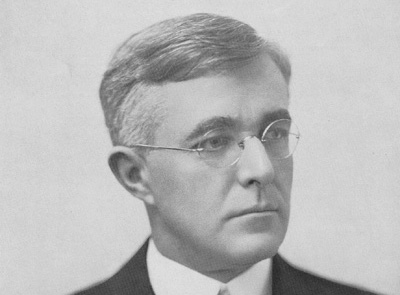 10. Irving Langmuir – An American physicist and chemist, Irving Langmuir is renowned for inventing the gas filled incandescent lamp and for the high-vacuum electron tube. The incandescent lamps are now being phased out, but for many years they were used for households and commercial areas and for cars and advertising sites.
10. Irving Langmuir – An American physicist and chemist, Irving Langmuir is renowned for inventing the gas filled incandescent lamp and for the high-vacuum electron tube. The incandescent lamps are now being phased out, but for many years they were used for households and commercial areas and for cars and advertising sites.
 Albert Einstein – He won the Physics Nobel Prize in 1921 for his “discovery of the law of photoelectrical effect”. The actual discovery may not have touched our lives but without it many of the modern day electronics would not have come into existence.
Albert Einstein – He won the Physics Nobel Prize in 1921 for his “discovery of the law of photoelectrical effect”. The actual discovery may not have touched our lives but without it many of the modern day electronics would not have come into existence. 3. Luis Walter Alvarez – He won the Nobel Prize in Physics in 1968, and had over 50 patents in his name. His most famous and useful invention was the radio distance and direction indicator. His invention of the hydrogen bubble chamber was used to detect subatomic particles and this further led to a major change in nuclear theories.
3. Luis Walter Alvarez – He won the Nobel Prize in Physics in 1968, and had over 50 patents in his name. His most famous and useful invention was the radio distance and direction indicator. His invention of the hydrogen bubble chamber was used to detect subatomic particles and this further led to a major change in nuclear theories. 4. Frederick Banting - A 1923 Nobel Prize winner in medicine, he discovered insulin and the role that it played in treating diabetes. With his colleagues, he then invented means of extracting and isolating insulin, and administering it to diabetes patients.
4. Frederick Banting - A 1923 Nobel Prize winner in medicine, he discovered insulin and the role that it played in treating diabetes. With his colleagues, he then invented means of extracting and isolating insulin, and administering it to diabetes patients. 5. Jack S. Kilby - A scientist who won the Physics Nobel Prize in 2000, Kilby is best known as the inventor of the handheld calculator and the thermal printer. His monolithic integrated circuit is one of the most widely used applications in electronic circuitry.
5. Jack S. Kilby - A scientist who won the Physics Nobel Prize in 2000, Kilby is best known as the inventor of the handheld calculator and the thermal printer. His monolithic integrated circuit is one of the most widely used applications in electronic circuitry. 6. Baruch S Blumberg – In 1963 Blumberg discovered an antigen to detect the presence of Hepatitis B in blood samples. His invention of the test to isolate this virus, is used extensively even today, and it has led to a significant decrease in Hepatitis B infections after blood transfusions. He also jointly developed a vaccine against this virus.
6. Baruch S Blumberg – In 1963 Blumberg discovered an antigen to detect the presence of Hepatitis B in blood samples. His invention of the test to isolate this virus, is used extensively even today, and it has led to a significant decrease in Hepatitis B infections after blood transfusions. He also jointly developed a vaccine against this virus. 7. Arthur Schawlow – Along with Charles Townes he was the co-inventor of the Laser. Today various fields such as defence and communication and medicine rely upon Laser techniques to make their jobs easier. They received a patent for the laser in 1960 and within a few years it was being commonly used by eye-surgeons for minute, precise surgery.
7. Arthur Schawlow – Along with Charles Townes he was the co-inventor of the Laser. Today various fields such as defence and communication and medicine rely upon Laser techniques to make their jobs easier. They received a patent for the laser in 1960 and within a few years it was being commonly used by eye-surgeons for minute, precise surgery. 8. John Bardeen & William B Shockley & Walter Brattain – These three shared the Nobel Prize in Physics in 1956 for inventing the transistor – a device that could amplify electrical current. Bardeen won the Nobel Prize a second time 1972 for his work on superconductivity. Modern computer technology electronics and microchip owe a lot to these three scientists.
8. John Bardeen & William B Shockley & Walter Brattain – These three shared the Nobel Prize in Physics in 1956 for inventing the transistor – a device that could amplify electrical current. Bardeen won the Nobel Prize a second time 1972 for his work on superconductivity. Modern computer technology electronics and microchip owe a lot to these three scientists. 9. Nils Gustaf Dalen – He was awarded the Nobel Prize for his “invention of automatic regulators for use in conjunction with gas accumulators for illuminating lighthouses and bouys.” He was also the inventor of the AGA cooker and of the Dalen Light.
9. Nils Gustaf Dalen – He was awarded the Nobel Prize for his “invention of automatic regulators for use in conjunction with gas accumulators for illuminating lighthouses and bouys.” He was also the inventor of the AGA cooker and of the Dalen Light. 10. Irving Langmuir – An American physicist and chemist, Irving Langmuir is renowned for inventing the gas filled incandescent lamp and for the high-vacuum electron tube. The incandescent lamps are now being phased out, but for many years they were used for households and commercial areas and for cars and advertising sites.
10. Irving Langmuir – An American physicist and chemist, Irving Langmuir is renowned for inventing the gas filled incandescent lamp and for the high-vacuum electron tube. The incandescent lamps are now being phased out, but for many years they were used for households and commercial areas and for cars and advertising sites.
Subscribe to:
Posts (Atom)


